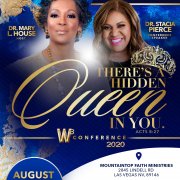My only aim is to finish the race and complete the task the Lord Jesus has given me. Acts 20:24
In 2018, endurance athlete Colin O’Brady took a walk that had never been taken before. Pulling a supply sled behind him, O’Brady trekked across Antarctica entirely alone—a total of 932 miles in 54 days. It was a momentous journey of dedication and courage.
Commenting on his time alone with the ice, the cold, and the daunting distance, O’Brady said, “I was locked in a deep flow state [fully immersed in the endeavor] the entire time, equally focused on the end goal, while allowing my mind to recount the profound lessons of this journey.”
For those of us who have put our faith in Jesus, that statement might strike a familiar chord. It sounds a lot like our calling as believers: focused on the goal of walking through life in a way that glorifies (honors) God and reveals Him to others. In Acts 20:24, Paul, no stranger to dangerous journeys, said, “I consider my life worth nothing to me; my only aim is to finish the race and complete the task the Lord Jesus has given me—the task of testifying to the good news of God’s grace.”
As we walk on in our relationship with Jesus, may we recognize what we know about the purpose for our journey and press on to the day we’ll see our Savior face to face.
By: Dave Branon
Reflect & Pray
How does your relationship with Jesus affect your walk in life? What can you do today to reveal to others your love for Him?
Dear heavenly Father, as we walk through life, help us to honor You in all we do. And may we encourage others to journey with You.
resource: Our Daily Bread www.odb.org
The REAL ID Act establishes minimum security standards for license issuance and production and prohibits Federal agencies from accepting for certain purposes driver’s licenses and identification cards from states not meeting the Act’s minimum standards. The purposes covered by the Act are: accessing Federal facilities, entering nuclear power plants, and, boarding federally regulated commercial aircraft.
Beginning October 1, 2020, every air traveler 18 years of age and older will need a REAL ID-compliant driver’s license, state-issued enhanced driver’s license, or another acceptable form of ID to fly within the United States.
CHECK FOR THE STAR
REAL ID-compliant cards are marked with a star at the top of the card. If you’re not sure, contact your state driver’s license agency on how to obtain a REAL ID compliant card.
Individuals who are unable to verify their identity will not be permitted to enter the TSA airport checkpoint and will not be allowed to fly. However, In the event you arrive at the airport without valid identification, because it is lost or at home, you may still be allowed to fly. The TSA officer may ask you to complete an identity verification process which includes collecting information such as your name, current address, and other personal information to confirm your identity. If your identity is confirmed, you will be allowed to enter the screening checkpoint. You will be subject to additional screening, to include a patdown and screening of carry-on property.
You will not be allowed to enter the security checkpoint if your identity cannot be confirmed, you chose to not provide proper identification or you decline to cooperate with the identity verification process.
Other acceptable forms of ID include:
- S. passport
- S. passport card
- DHS trusted traveler cards (Global Entry, NEXUS, SENTRI, FAST)
- S. Department of Defense ID, including IDs issued to dependents
- Permanent resident card
- Border crossing card
- State-issued Enhanced Driver’s License
- Federally recognized, tribal-issued photo ID
- HSPD-12 PIV card
- Foreign government-issued passport
- Canadian provincial driver’s license or Indian and Northern Affairs Canada card
- Transportation worker identification credential
- S. Citizenship and Immigration Services Employment Authorization Card (I-766)
- S. Merchant Mariner Credential
Be mindful that you will need to go in person to present documentation to verify who you are in order to get your REAL ID.
As I travel across the country speaking at high schools and colleges, here’s something I hear from young adults all the time: “So . . . taxes. Where do I even start?”
Dude, heck if I know. I’m kidding. But let’s face it: Filing taxes is confusing. It’s intimidating. It’s one of the not-so-fun parts of being an adult. But it has to be done, especially if you want to build wealth (and, you know, be a U.S. citizen).
If you’re worried about when and how to file taxes for the first time, don’t stress—it’s actually not as complicated as it sounds. Here’s how to do it the right way.
1. FIGURE OUT WHETHER YOU NEED TO FILE.
Honestly, you might not even need to worry about filing taxes yet (praise hands)! But before you breathe a sigh of tax-exempt relief, there are a few basic details you need to know to figure out whether or not you need to file.
Here are some common questions you might have about this step:
DO DEPENDENTS NEED TO FILE TAXES?
Even if you’re technically still dependent on your parents (you live with them, they pay your bills, etc.), and even if your parents still claim you as a dependent on their own tax return, you might still need to file based on how much money you earned in 2019. Read on, my friend.
HOW MUCH MONEY DO I NEED TO EARN TO START PAYING TAXES?
So, let’s say your parents claim you as a dependent on their tax return, you’re not married, and you’re also not blind or over the age of 65. You should file taxes if one of these situations applies to you:
- Your earned income was more than $12,200.
- Your unearned income was more than $1,100.
- Your gross income (the money you earn before taxes are taken out) was more than whichever of these totals is bigger: either $1,100 or your earned income plus $350.
If you’re living that single life, your parents don’t claim you as a dependent, and you’re under 65, then you’ll need to file if your gross income in tax year 2019 was at least $12,200. If you’re married and filing jointly (meaning you and your spouse are putting all of your details on the same tax return), you should file if your gross income was at least $24,400. (Nothing’s more romantic than filing taxes together, am I right?)
HOLD UP. WHAT’S EARNED AND UNEARNED INCOME?
Earned income is any money made from working a job, like your salary and wages, bonuses, commissions, and tips. Unearned income is money earned without working—interest earned from a savings account, for example.
Some other forms of unearned income include alimony, dividends, capital gains, etc. But if this is your first time filing taxes, I’d be willing to bet that interest is the only type of unearned income that applies to you.
IF I’M A FREELANCER, DO I NEED TO PAY TAXES?
If you earned at least $400 from freelance work during the year, then you need to pay taxes on it (bummer). My main man Dave Ramsey suggests setting aside about 25–30% of every check you get from freelance work, so you aren’t left hanging when tax season rolls around.
2. GET YOUR DOCUMENTS TOGETHER.
There are a few different documents you’ll need in order to file your taxes. (This is the fun part.) You’ll need at least one of these:
- W2 form: If you earn a salary or wage, your employer will send you this.
- 1099 form: If you’re a freelancer or self-employed, you should get one of these from every client who paid you at least $600 during the tax year.
- Charitable donations: If you donate to a nonprofit religious, educational, or charitable group, make sure you get a donation receipt because you’ll need that at tax time!
- Mortgage interest statements
- Investment income statements
- Form 8822: You’ll need this if you moved in the past year.
- SS-5: You’ll need this if you changed your name in the past year.
- W-4: If you had a job change and started making a new income in the past year, this form will adjust tax withholdings.
Again, if this is your first time filing taxes, then the W2, 1099, and charitable donation forms are probably the only ones that apply to you (unless you already have a bunch of investments or own a house at 16 years old or something, in which case—what?). But it never hurts to double-check with a tax professional.
3. CHOOSE YOUR FILING STATUS.
As a first-time tax filer, this step should be pretty easy. Your filing status will help you know what your standard deduction is, how much you’ll owe, if you qualify for certain credits, and other official-sounding stuff like that.
There are five different filing statuses:
- Single: Your filing status is single if you’re not married (duh), divorced, legally separated, or widowed before the tax year.
- Married Filing Jointly: We’ve been over this one. This is for you lucky married people who choose to file a joint tax return. You can usually save more this way!
- Married Filing Separately: This one is for you married people who choose to file separate tax returns for whatever reason. That’s up to you guys, but make sure you look at both joint and separate options and pick the one that’s most affordable for you.
- Head of Household: If you’re not married, have paid for more than half the household expenses for the year, and can claim a dependent on your tax return, this is the filing status for you. This mostly applies to single parents.
- Qualifying Widow(er): You can still file jointly with your spouse if they passed away and you don’t get married again in the same tax year. This filing status is available for up to two years after the year of your spouse’s death.
Note: There are a bunch of other tax rules for special situations, like if your spouse is in a combat zone and can’t sign, you’re married but your parents still claim you as a dependent on their return, etc. I don’t have the time or energy to cover all of that in this blog. (Would y’all want to read a 20-page blog about taxes? I wouldn’t.) But you can find all of these details—and a lot of other answers to your questions—on IRS.gov, the official website for all things tax-related.
4. DECIDE IF YOU WANT TO TAKE THE STANDARD DEDUCTION OR ITEMIZE.
The standard deduction is a specific dollar amount that lowers the income you’re taxed on. Like we’ve touched on already, for single filers, that dollar amount is $12,200. For qualifying widow(er)s or people who are married filing jointly, that dollar amount is $24,400.
So, for example, if your filing status is single, you made $30,000 in 2019, and you decided to take the standard deduction, you would only pay taxes on $17,800.
To take the standard deduction, there are no extra steps you have to do—just file your taxes like normal and the IRS will let you know when or if you get any money back. With this option, it’s still possible for you to get a deduction (which means you might owe less money), even if you don’t have any itemized deductions you can claim.
Your other option is to itemize all your deductions. People who choose this option keep receipts of qualifying expenses throughout the tax year and record them in Schedule A (Form 1040).
Some examples of these types of expenses would be:
- Out-of-pocket medical or dental expenses
- Charitable donations
- Large, work-related expenses that you weren’t payed back for (for example, some people can claim money spent on gas if they had to drive a lot for work)
- Paid mortgage interest or real estate taxes
Depending on which tax bracket you’re in, a certain amount of money will be taken off your tax bill based on the total amount of your itemized deductions.
Most people go for the standard deduction because it’s easier and faster, but for some people, itemizing can save a lot more money. Talking with a tax pro can help you figure out which option makes the most sense for you.
Have a headache yet? Don’t worry, we’re almost done.
5. FILE YOUR TAXES FOR THE FIRST TIME LIKE A BOSS.
Okay, fam. You’ve got your documents. You know your filing status. You decided if you’re taking the standard deduction or itemizing all the way. Now it’s time to actually file your taxes.
There are a few different ways to do this:
- You could get the help of a tax pro, which can seriously help with the stress and confusion (this is what about 58% of Americans do).
- You could use tax software (which can be a good option if your tax situation is pretty simple).
- You could fill out all the paperwork yourself and mail it to the IRS.
But listen up: No matter which method you go with, your 2019 tax return is due on Wednesday, April 15, 2020.
Once that’s done, it’s time to run a couple victory laps because . . . You. Just. Filed. Your. Taxes. For. The. First. Time! I’m so proud.
6. WATCH FOR A REFUND (AND ADJUST WITHHOLDINGS IF NEEDED).
Within about a month of Tax Day, the IRS will let you know if you’re getting a tax refund—which is money back in your account. Y’all, this is not the time to go out and treat yo self. It may sound great, but this actually means that too much money was withheld from your paycheck throughout the tax year—all that money was yours in the first place, and you should get to keep more of it during the year.
There’s also a chance you’ll owe money to the IRS instead of getting a refund (this is actually better than getting a huge refund because it means you got to hold onto more of your money each month.) Just know you might have to take some money out of savings to cover that cost, so be intentional about budgeting and having your emergency fund in place.
If you get a really big refund or owe a lot to the IRS, you’ll want to adjust your withholdings (the amount of money that’s taken out of your paycheck for taxes).
Once you adjust your withholdings as needed, all that’s left to do is get organized for next year by buying a folder for all your tax documents and receipts (you’ll want to hang on to them for at least three years just in case).
Congrats, y’all—this means you’re officially an adult. Remember: If you need help figuring out whether to use a tax pro, use tax software, or file on your own, this quiz will help you out!
Written by Anthony O’Neal from AnthonyONeal.com
LOCATION
2845 Lindell Rd
Las Vegas NV 89146
SUNDAYS
A Time of Prayer 9:00 am (on campus) 1st Sundays (Feb-Oct) Worship Service On-Campus & Online 10 am PST
WEDNESDAYS
Bible Study with Pastor Clinton HouseCheck schedule for services
CONTACT
Phone: (702) 367-1636
Fax: (702) 367-4008
LOCATION
2845 Lindell Rd
Las Vegas NV 89146
CONTACT
Phone: (702) 367-1636
Fax: (702) 367-4008
SUNDAYS
A Time of Prayer 9:00 am (on campus) 1st Sundays (Feb-Oct)
Worship Service On-Campus & Online 10 am PST
WEDNESDAYS
Bible Study with Pastor Clinton House
Concluded for 2025 Check schedule for special services







